How to grow perennial Gaillardia correctly?
In many flower beds, perennial Gaillardia is found, planting and caring for it are not difficult. Despite this, the cultivation of perennials is associated with certain features, which consist in the correct choice of the place of growth of this dwarf shrub and correct care for it.
The flowers of this culture are shaped like a yellow-red aster. The culture can be both annual and long-term. Some varieties of perennial Gaillardia reach 80 cm in height. All flowers delight with bright inflorescences almost all summer and autumn before the onset of frost. A shrub can grow in one place for up to five years. After this period, the plant must be transplanted, otherwise they may die.
Landing
Planting a culture involves choosing the location of the future flower garden, preparing the soil and planting the culture directly.
When choosing a place where Gaillardia will grow, it is important to rely on the following points:
- the site should be well lit, because the perennial belongs to light-loving crops;
Important: Only with sufficient lighting will Gaillardia bloom for a long time.
- the flower will grow well in light cultivated soil;
- it is not necessary to plant the plant in soil with high acidity and high humidity; it is also worth abandoning heavy soils with a high humus content.
When planting, it is also important to determine the optimal arrangement of the bushes relative to each other: it is better to maintain a distance of about 35 cm between them.
Tip: To make the bush seem more lush, you can plant up to four plants in one hole.
Site selection
Soil preparation
At the time of planting, perennial Gaillardia needs to be fed with organic and mineral fertilizers:
- organic matter: humus or compost (bucket), wood ash (1-2 glasses), - is applied directly to the planting hole;
- complex mineral dressing (1 tbsp).
After making the necessary additives, the holes are well spilled with water, bushes are installed in them and sprinkled with earth.
Planting methods
Just like other perennials, Gaillardia reproduces in two ways:
- Vegetative
The easiest method to get a new plant. It is used to separate lush old plants, as the growth of this flower is very slow. It is best to divide the bush in mid-spring, but you can also in the fall immediately after removing the peduncles, so that the flower has time to take root and take root.
Tip: Since the bush grows for a long time, you should not divide it into small parts. It is enough to form three to four root petioles from the mother bush.
- Seed
Plants grow well from seeds not collected in time and fallen to the ground. However, the daughter flowers can be very different from the mother. To control the spread of Gaillardia, you need to leave some peduncles specifically for obtaining seed, and after they ripen, collect and dry the seeds.
Seed planting
Seeds are scattered on an exploration bed with well-moistened soil. At the same time, a distance between the bushes of about 25 cm is observed. For sowing seedlings, it is better to take individual containers, since the culture does not tolerate transplantation very well. When sowing, you do not need to deeply deepen the seeds - a maximum of 1 cm. Otherwise, they will not be able to germinate.
Tip: The seeds may not be covered with soil, but lightly pressed to the ground to increase the chance of germination.
After sowing, it is necessary to cover the area with material to create a greenhouse effect.When planting seedlings, containers are also covered with foil and placed in a warm place with a temperature of about 23 degrees. After 1.5 - 2 weeks, sprouts will appear. As soon as they have 2 or 3 true leaves, the seedlings must be picked.
To do this, the sprout, along with a lump of earth, is simply transferred into a large container, while trying not to damage the roots. The hardened and grown sprouts are then transplanted to a permanent place in late summer - early autumn or spring.
Important: The planted plants will begin to bloom only next year.
Care
Caring for perennial Gaillardia is very simple. It consists in performing the following actions:
- Timely watering in moderation. The plant belongs to drought-resistant crops, therefore it is able to withstand heat and drought. But at the same time, she cannot stand waterlogging.
- Tying tall plants. If you neglect this procedure, then the bush will simply fall to the ground. For support, you can take the twigs or stem of a neighboring plant. Irises can be a good support, the stem of which can withstand even in strong winds.
- Shelter for the winter. Despite the frost resistance of the culture, it is still recommended to cover it with fallen leaves or spruce branches for the winter.
Disease prevention and pest control.
Gaillardia is a drought-resistant crop, so it can be affected by fungal diseases in high soil moisture. To prevent infestation, it is necessary to strictly control the level and frequency of watering.
If the color of the foliage began to lose brightness, gray spots appeared on it, then it must be removed. All flowers must be treated with a solution of potassium permanganate, taken in an amount of 2.5 g per bucket of water. If most of the flowers are infected, then they must be treated with fungicidal agents.
Such harmful insects as a grinder and thrips can hit Gaillardia. To combat them, you can use special chemicals.
Top dressing
You need to fertilize the plant three times per season:
- during the formation of buds;
- at the time of rapid flowering (the last two summer months);
- after removing faded buds (by mid-autumn, a few weeks before the first frost).
For feeding, a special complex mineral additive and humus are used.
Important: Gaillardia does not tolerate subcrusting with manure.
The popular perennial cannot fully develop without the sun. Therefore, it is advisable for him to choose well-lit areas. It is difficult to grow this flower for several years on poorly drained soils: high humidity contributes to the soaking of plants or their freezing in winter. Therefore, special attention should be paid to the selection and preparation of soil for planting a plant. With proper planting and care, you can get a lush bush that delights with bright inflorescences for several years.
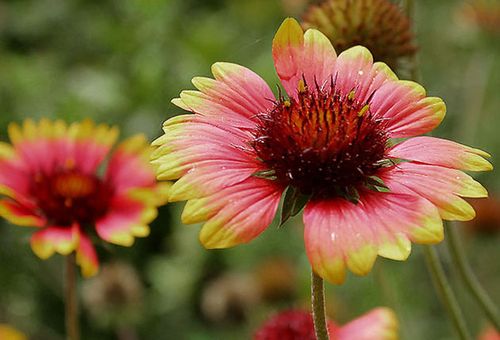
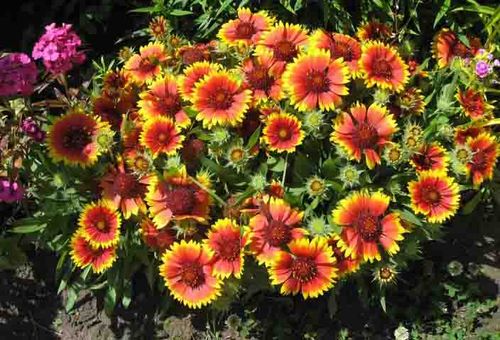

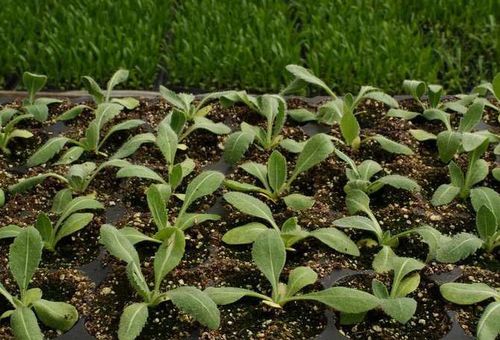

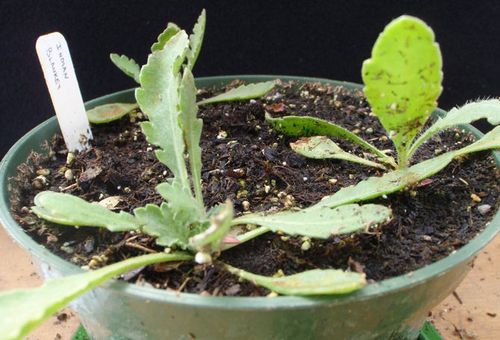

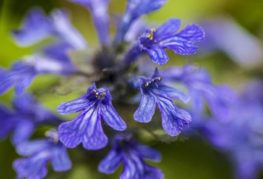
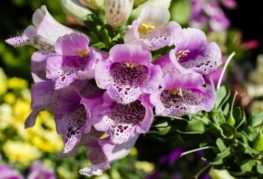
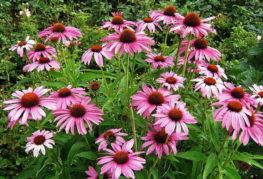

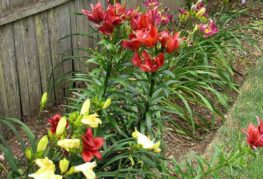
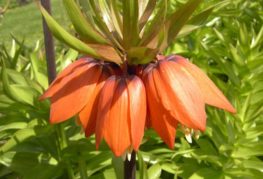
and will be published shortly.